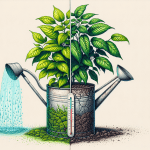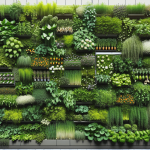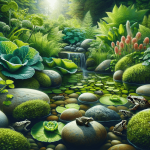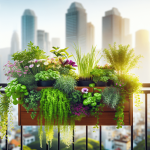This post may contain affiliate links. As an Amazon Associate, we may earn commissions from qualifying purchases.
Imagine having a garden that not only flourishes with lush plants but also supports a thriving fish habitat. That’s the beauty and potential of aquaponics, a sustainable gardening practice that beautifully harmonizes fish farming (aquaculture) and soil-less plant cultivation (hydroponics). This innovative system leverages a symbiotic relationship where fish waste provides essential nutrients for plants, which in turn purify the water for the fish. Setting up an effective aquaponic system involves some key considerations, such as choosing the right fish species, selecting appropriate plants, and maintaining balanced water conditions. By understanding these elements, you can create a productive and eco-friendly garden that benefits both your kitchen and the environment. Have you ever thought about combining the benefits of gardening and fish farming into one seamless system? Imagine a method that not only helps you grow your own vegetables but also breeds healthy fish. This isn’t science fiction—this is aquaponics!
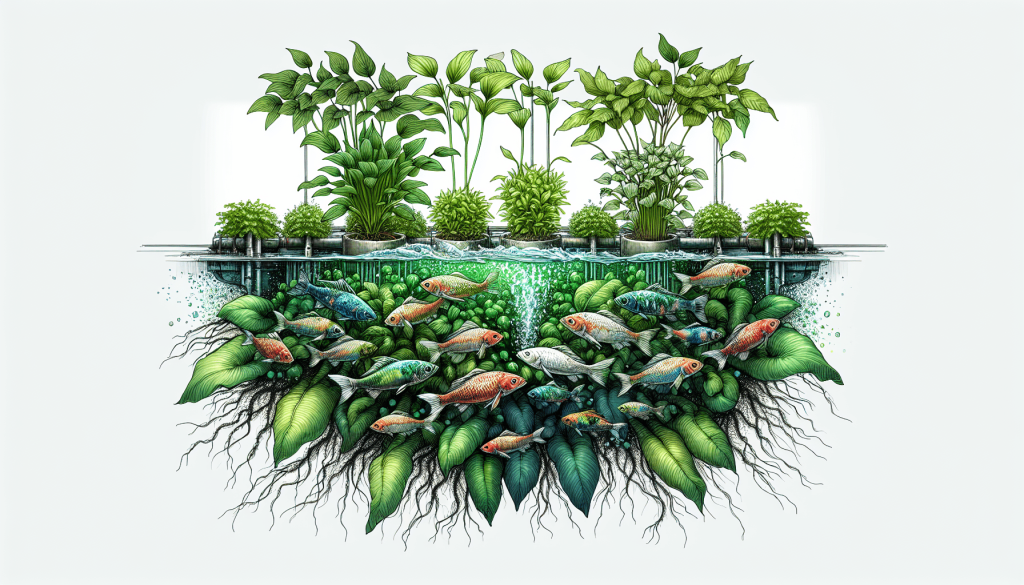
What is Aquaponics?
Aquaponics is a sustainable gardening method that combines aquaculture (fish farming) and hydroponics (growing plants in water without soil). This integrated approach offers a symbiotic environment where fish and plants mutually benefit from each other’s presence. Fish produce waste that becomes a nutrient source for the plants, and in turn, plants help to filter and clean the water that returns to the fish tanks.
The Symbiosis of Aquaponics
In this system, fish waste accumulates in the water as ammonia, which is toxic to fish. However, beneficial bacteria present in the system convert ammonia into nitrites and then into nitrates. These nitrates are excellent nutrients for plant growth. By absorbing these nutrients, the plants effectively clean the water, which is then recirculated back to the fish tank, ensuring a balanced and healthy environment for both fish and plants.
Advantages of Aquaponics
Aquaponics offers numerous benefits, making it an attractive option for sustainable gardening.
Water Efficiency
Aquaponics uses up to 90% less water compared to traditional soil-based gardening, making it an excellent choice for areas with scarce water resources. The water is continuously recirculated within the system, reducing the overall water consumption dramatically.
Space Efficiency
The system can be set up vertically, making it ideal for urban gardening where space is limited. You can maximize your yield without requiring vast open fields or large plots of land.
Faster Plant Growth
Due to the rich nutrient profile provided by fish waste, plants can grow up to 30% faster than those in traditional soil-based systems. This quick growth allows for more harvest cycles annually.
Low Maintenance
Aquaponics systems are designed to be highly automated. Once established, they require minimal intervention, as the natural processes do most of the work. Monitoring water quality and feeding the fish are usually the primary tasks.
Organic and Pesticide-Free
The closed-loop nature of aquaponics discourages the use of harmful pesticides, making the produce genuinely organic and safe to eat. Both fish and plants remain free from chemical contaminants.
How Does Aquaponics Work?
To understand the full potential of aquaponics, it’s essential to know how it integrates fish farming and hydroponics seamlessly.
The Components
An aquaponic system consists of several key components, each playing a crucial role.
- Fish Tank: Holds the fish and provides the primary production of nutrient-rich waste.
- Grow Beds: Where plants grow, usually filled with a growing medium such as gravel or clay pebbles.
- Water Pump: Circulates water between the fish tank and the grow beds.
- Air Pump: Ensures sufficient oxygen levels in the water, crucial for both fish and beneficial bacteria.
- Biofilter: Houses the beneficial bacteria that convert fish waste into nutrients plants can absorb.
The Process
- Fish Feeding: Fish are fed regularly. Their waste primarily consists of ammonia.
- Nitrification: Beneficial bacteria convert ammonia into nitrites and then into nitrates.
- Plant Absorption: Plants uptake the nitrates as nutrients. This process cleans the water, which is then recirculated back to the fish tank.
Basic Types of Aquaponics Systems
There are several types of aquaponic systems, each with its unique setup and benefits.
| System Type | Description | Pros | Cons |
|---|---|---|---|
| Media Bed | Uses a growing medium to support plants, which also acts as a biofilter. | Simple setup, low maintenance | Limited scalability, can be heavy |
| Nutrient Film Technique (NFT) | Plants grow in a thin film of nutrient-rich water circulated through channels. | Lightweight, suitable for leafy greens | Susceptible to clogging, less stable for larger plants |
| Deep Water Culture (DWC) | Plants float on rafts with roots suspended in nutrient-rich water. | High yields, suitable for commercial applications | Requires large tanks, more complex maintenance |
| Wicking Bed | A soil-based system where water wicks up from a reservoir to the plant roots. | Simple and low-cost | Less efficient at water and nutrient use |
Key Considerations for Setting Up an Aquaponic System
Interested in starting your own aquaponic garden? Here are some crucial factors to consider.
Location
Choose a location that gets plenty of natural sunlight but remains sheltered from extreme weather conditions. Aquaponic systems can be set up indoors, in greenhouses, or even outside if your climate permits.
Size and Scale
Determine the scale of your system based on your goals. Are you looking for a small-scale system to supplement your family’s vegetable intake, or do you aim to set up a commercial operation? Your objectives will dictate the size, complexity, and cost of your system.
Selecting Fish
Choose fish species that are well-suited to the climate and conditions of your location. Popular choices include tilapia, catfish, and trout. Each species has different water temperature and quality requirements, so select wisely.
Plant Selection
Not all plants thrive in an aquaponic system. Leafy greens like lettuce, spinach, and herbs are particularly well-suited. If you are more experienced, you might venture into growing fruiting plants like tomatoes, peppers, and cucumbers.
Water Quality
Maintaining optimal water quality is crucial for the well-being of both fish and plants. Key parameters to monitor include pH levels, ammonia, nitrites, and nitrates. A balanced pH (between 6.8 and 7.2) is ideal for most aquaponic systems.
Cycling the System
Before adding fish, it is essential to cycle your system to establish a healthy colony of nitrifying bacteria. This process can take several weeks but is crucial for the long-term success of your aquaponic system.
Maintenance and Monitoring
Even though aquaponic systems are relatively low-maintenance, they still require regular monitoring. This includes checking water quality, ensuring pumps and aeration systems are functioning correctly, and feeding the fish as needed.
Initial Cost and Budget
Setting up an aquaponic system can range from a few hundred to several thousand dollars, depending on the size and complexity. Factor in costs for tanks, pumps, grow beds, and other essential equipment.
Learning Curve
Aquaponics isn’t a plug-and-play system. It requires a foundational understanding of both aquaculture and hydroponics. Be prepared to invest time in learning and troubleshooting.
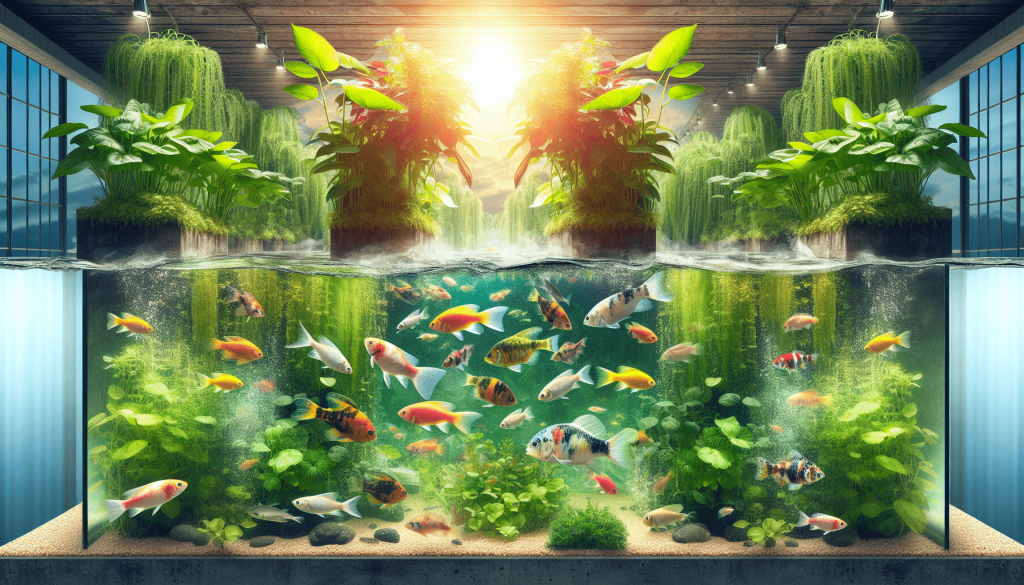
Sustainability and Environmental Impact
The sustainable nature of aquaponics makes it an appealing choice for eco-conscious individuals and communities.
Resource Efficiency
Aquaponics is one of the most resource-efficient agricultural methods available. Its closed-loop system uses fewer resources like water and fertilizers compared to traditional farming.
Reduced Carbon Footprint
By growing your own food, you reduce the need for transportation, packaging, and storage, all of which contribute to your carbon footprint. Additionally, the fish produced can serve as a local, sustainable source of protein.
Waste Reduction
The integration of fish farming and plant cultivation minimizes waste. Excess fish feed, which would be uneconomical in a standalone fish farm, becomes a valuable nutrient source in an aquaponic system.
Urban Farming Potential
Aquaponics is particularly suitable for urban environments. Rooftop and indoor systems can help mitigate the food deserts commonly found in cities, providing fresh produce and fish locally.
Challenges and Solutions
Like any farming method, aquaponics comes with its set of challenges. Here are some common issues and potential solutions.
System Imbalances
An imbalance in the system can lead to poor plant growth or unhealthy fish. Regular monitoring and adjustments are essential.
-
Issue: Ammonia build-up due to underdeveloped biofilters.
- Solution: Extend the cycling period to establish a healthy bacteria colony.
-
Issue: pH fluctuations.
- Solution: Use buffering agents like crushed coral or potassium hydroxide to stabilize pH levels.
Initial Setup Costs
High initial costs can be prohibitive for some people.
- Solution: Start small and scale up as you gain experience and resources. DIY options and second-hand equipment can also reduce initial expenses.
Climate Control
Maintaining optimal temperatures for both fish and plants can be challenging, especially in extreme climates.
- Solution: Use greenhouses, heaters, or coolers to maintain a stable environment.
Technical Knowledge
The complexity of an aquaponic system can be daunting for beginners.
- Solution: Leverage online resources, workshops, and community groups to expand your knowledge.
Pest Management
While aquaponics reduces the need for pesticides, you may still encounter pests.
- Solution: Use natural pest control methods like introducing beneficial insects or employing physical barriers.
Conclusion
Aquaponics holds considerable promise as a sustainable gardening practice that marries the best aspects of fish farming and hydroponics. It offers numerous benefits, including water and space efficiency, faster plant growth, and lower maintenance, while being environmentally friendly. Setting up an aquaponic system requires careful planning and management, but the rewards can be substantial. Whether you’re a home gardener or an aspiring commercial farmer, aquaponics provides an innovative, sustainable way to grow food.
With some research and effort, you can set up your own aquaponic system and start reaping the benefits. Imagine enjoying fresh, organic vegetables and succulent fish, all grown right in your backyard or even your living room. Why not give it a try and contribute to a more sustainable future?


